-1024x576.png)
“Sakura” means cherry blossom in English.
The two weeks or so when the cherry blossoms bloom is the most favorite season for Japanese people.
The light pink flowers herald the end of the cold winter and the arrival of warm spring.
In addition to the joy of viewing, there are many beautiful cherry blossom-themed songs about farewells and encounters, as it coincides with the time of graduation and entrance ceremonies.
It can be said that there is no other flower that tugs at the heartstrings of the Japanese more than cherry blossoms.
J-pop: hit songs of spring with cherry blossoms in the title
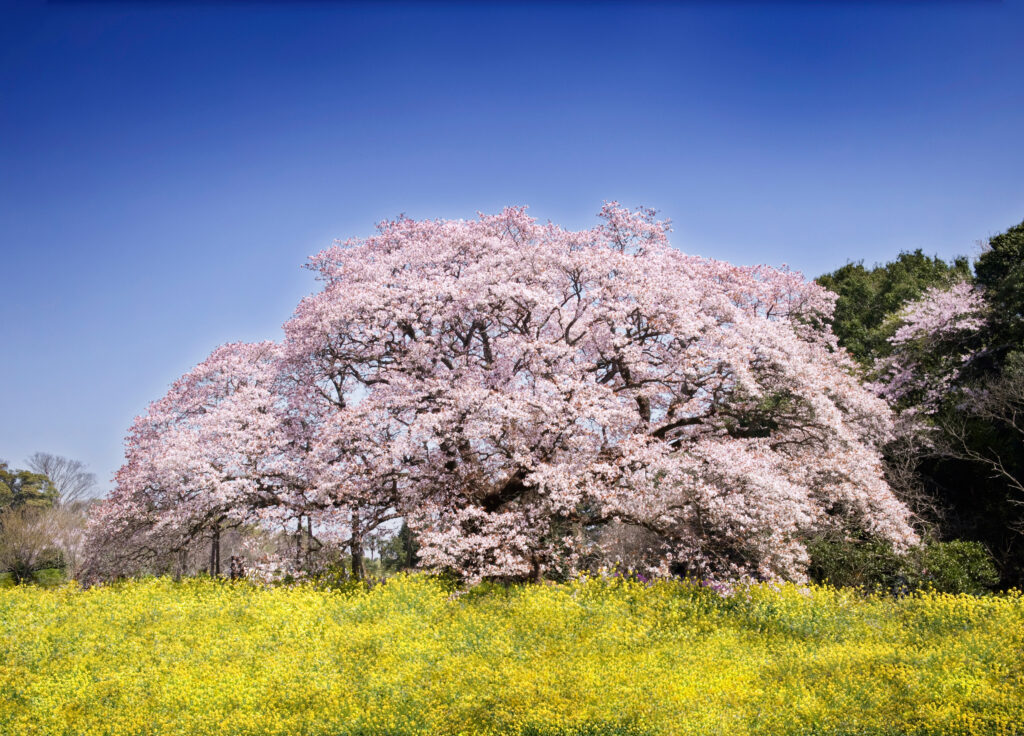
The Japanese lyrics and English translation of the chorus are also posted.
Please try singing along!
“Cherry” Spitz
『チェリー』スピッツ 1996年
This is a medium tempo song by a rock band with male vocals.
The song nostalgically looks back on happy days and expresses a positive determination to move forward into the future.
Chorus: “Aishiteru no hibiki dake de, tsuyoku nareru kigashita yo. “
Translation: “Just the sound of ‘I love you’ makes me feel strong, I want to meet you again someday in this place.”
Spitz’s other representative songs include 『ロビンソン』(”Robinson”, 1995) and『スカーレット』(”Scarlet”, 1997).
“Sakura no Toki (cherry blossom season)“ Aiko
『桜の時』aiko 2000年
A medium tempo song by a female singer-songwriter and became a commercial song for “Calpico Water”.
It is a love song about a girl who wants to believe in a wonderful future with you.
Chorus: “Yukkuri yukkuri, jikan wo koete, mata chigau shiawasena kiss wo surunoga anata de aruyouni.”
Translation: “Slowly, slowly, over time, may you be the one I kiss differently and happily again.”
Aiko’s other representative songs include 『カブトムシ』(“Beetle”, 1999) and 『ボーイフレンド』(”Boyfriend”, 2000).
“Sakurazaka (cherry blossom viewing hill)” Masaharu Fukuyama
『桜坂』福山雅治 2000年
A ballad song by a male singer-songwriter who is also an actor.
It is a pure love song that describes his unchanging love for the person he remembers at Sakurazaka.
Chorus: “Ai to shitteitanoni, Haru wa yattekuru noni, yume wa imamo yume no mamade.”
Translation: “I knew it was love, and yet spring is coming, and the dream is still a dream.”
Masaharu Fukuyama’s other representative songs include『Hello』(1995) and『家族になろうよ』(”Let’s be a family”, 2011).
“SAKURA Drops” Hikaru Utada
『SAKURAドロップス』宇多田ヒカル 2002年
A slow-tempo song by a female singer-songwriter.
The lyrics are about trying to recover from a broken heart by overlapping the end of love with the falling of cherry blossoms.
Chorus: “Koi wo shite, owari wo tsuge, chikau koto wa korega saigono heartbreake.”
Translation: “I’m in love, it’s over, and I swear this is the last heartbreak.”
Hikaru Utada’s other representative songs include 『Automatic』(1998) and『First Love』(1999).
“Sakura” Naotaro Moriyama
『さくら』森山直太朗 2003年
A ballad by a male singer-songwriter.
The lyrics and voice are delicate, as the singer laments the parting of friends while believing in the moment when they will be reunited.
Chorus: “Sakura, sakura ima maiochiru. Itsuka umarekawaru toki wo shinji.”
Translation: “Sakura, Sakura, now falling, believing in the moment when we will be reborn someday.”
Naotaro Moriyama’s other representative songs are 『夏の終わり』(”End of summer”, 2003) and『生きていることが辛いなら』(“If It’s Hard to Live”, 2008).
“Sakura Sake (Cherry blossoms, bloom!)“ Arashi
『サクラ咲け』嵐 2005年
An up-tempo song by a male idol group.
The song was used in a commercial for “Jonan Prep School” and is a positive and refreshing song that encourages students preparing for entrance exams.
Chorus: “Boku no mune no nakani, mebaeta namonaki yumetachi.”
Translation: “The nameless dreams that sprouted in my heart.”
Arashi’s other representative songs include『Love so sweet』(2007) and『カイト』(”Kite”, 2020).
“Sakura” Ketsumeishi
『さくら』ケツメイシ 2005年
A rap song by a male group.
It is a heartbreaking song about a lost love who recalls his ex-lover by watching cherry blossoms in full bloom.
Chorus: “Sakura maichiru nakani wasureta kioku to kimi no koe ga modottekuru.”
Translation: “In the falling cherry blossoms, forgotten memories and your voice come back to me.”
Ketsumeishi’s other representative songs include and 『涙』(“Tears”, 2004) and『友よ 〜 この先もずっと…』(“Friends – Always and Forever…”, 2016).
“Sakura” Kobukuro
『桜』コブクロ 2005年
A ballad song by a male duo.
It is a positive song about overcoming unfulfilled love feelings by overlapping the falling cherry blossoms.
Chorus: “Sakura no hanabira chirutabi ni, todokanu omoi ga mata hitotsu.”
Translation: “Every time a petal of cherry blossoms falls, there is another unfulfilled love.”
Kobukuro’s other representative songs are『蕾』(“Buds”, 2007) and『WINDING ROAD』(2007).
“Sakurairo Maukoro (When Cherry Blossom Dances in the Air)” Mika Nakashima
『桜色舞うころ』中島美嘉 2005年
A ballad song by a female vocalist.
It is a fragile song that overlaps the shifting emotions of lovers with the changing of the seasons.
Chorus: “Sakura iro mau koro, watashi wa hitori, osaekirenu muneni tachi tsukushiteta.”
Translation: “When the cherry blossoms were dancing, I stood alone with an uncontrollable heart.”
Mika Nakashima’s other representative songs are 『GLAMOROUS SKY』(2005) and『雪の華』(“Snow Flower”, 2003).
“SAKURA” Ikimonogakari
『SAKURA』いきものがかり 2006年
This ballad song by a female vocal band is also used as the melody for Ebina Station on the Odakyu Line.
It is a sad song about the feeling of being separated from your loved ones due to graduation.
Chorus: “Sakura hirahira maiorite ochite, yureru omoi no take wo dakishimete.”
Translation: “Sakura Fluttering down, falling down, embracing the shaking of your feelings.”
Ikimonogakari’s other representative songs are 『ありがとう』(”Thanks”, 2010) and『YELL』(2009).
“Sakura Iro (Cherry Color)” Angela Aki
『サクラ色』アンジェラ・アキ 2007年
A ballad by a female singer-songwriter.
It is a magnificent song that makes a vow to the cherry blossoms in full bloom to pursue your dreams without giving up. It was used in a Sony camera commercial.
Chorus: “Koishikute me wo tojireba, anokorono futari ga iru, sakurairono anata wo wasurenai, zutto zutto zutto.”
Translation: “I miss you so much, I close my eyes, I see the two of us from back then, I’ll never forget you, cherry-blossom-colored, forever and ever.”
Angela Aki’s other representative songs include『手紙 〜拝啓 十五の君へ〜』(”Letter – To the Fifteen-Year-Old Dear”, 2008).
“CHE.R.RY” YUI
『チェリー』ユイ 2007年
This up-tempo song by a female singer-songwriter was used for the “LISMO” commercial.
It is a cute song about a maiden’s heart who entrusts her faint love to an exchange of cell phone messages.
Chorus: “Koi shichattanda, tabun kizuite nai deshou. Hoshi no yoru negai komete cherry, yubisakide okuru kimi heno message.”
Translation: “I’ve fallen in love, you probably haven’t noticed, a starry night, a cherry with a wish, a message to you at my fingertips.”
YUI’s other representative songs are『Again』(2010).
“Junen Sakura (10 years Cherry blossoms)” AKB48
『10年桜』AKB48 2009年
A ballad song by a female idol group.
It is an emotional song that promises to meet again in 10 years even if they have to part ways due to graduation.
Chorus: “Junen go ni mata aou, kono sakura saku koro, nani ga attatte koko ni kuru.”
Translation: “See you again in 10 years, when these cherry blossoms bloom, no matter what happens, I’ll come here.”
AKB48’s other representative songs include 『ヘビーローテーション』(“Heavy Rotation”, 2011) and 『恋するフォーチュンクッキー』(”Fortune Cookie in Love”, 2014).
“Senbonzakura (Thousand Cherry Trees) feat. Hatsune Miku” Kurousa P
『千本桜 ft. 初音ミク』黒うさP 2011年
It is the spark for Vocaloid songs using the Vocaloid Miku Hatsune.
Many videos of him trying to sing the song have been posted.
Chorus: “Senbonzakura yoru ni magire, kimi no koe mo todokanaiyo.”
Translation: “Senbonzakura, lost in the night, I can’t even hear your voice.”
“Sakura ga Furu Yoru wa (The night the cherry blossoms fall)“ Aimyon
『桜が降る夜は』あいみょん 2022年
This is a song by a female singer-songwriter.
She sings about the distance and frustration of being with the person you love.
Chorus: “Ah, sakura ga furu yoru wa anata ni aitai to omoimasu, doushite? to kikaretemo.”
Translation: “Ah, on a night when the cherry blossoms fall, I miss you. Even if you ask me why.”
Aimyon’s other representative songs include 『マリーゴールド』(”Marigold”, 2018)and 『ハルノヒ』(”Spring Day”, 2019).
extra edition
“Sakurambo” Ai Otsuka
『さくらんぼ』大塚愛 2004年
Up-tempo song by a female singer/songwriter.
It is about a relationship with a good friend and lover as cherries.
Chorus: “Mo ikkai!”
Translation: “One more time!”
Ai Otsuka’s other representative song is『プラネタリウム』(“Planetarium”, 2005).
“Sakura Sakura” NHK Tokyo Children’s Choir
『さくらさくら』NHK東京児童合唱団
The most well-known Japanese melody overseas, as quoted in Madame Butterfly. It is an ancient song composed in a uniquely Japanese scale as an exercise for the Koto (Japanese harp).
Lyric: “Sakura sakura, noyama mo sato mo, miwatasu kagiri. Kasumi ka kumo ka, asahi ni niou.”
Translation: “Cherry blossoms, in mountains and villages, as far as the eye can see, like a haze or a cloud, are in full bloom in the morning sun.”
Japanese folk music
About Cherry Blossoms
Main types of cherry trees
Somei Yoshino 染井吉野
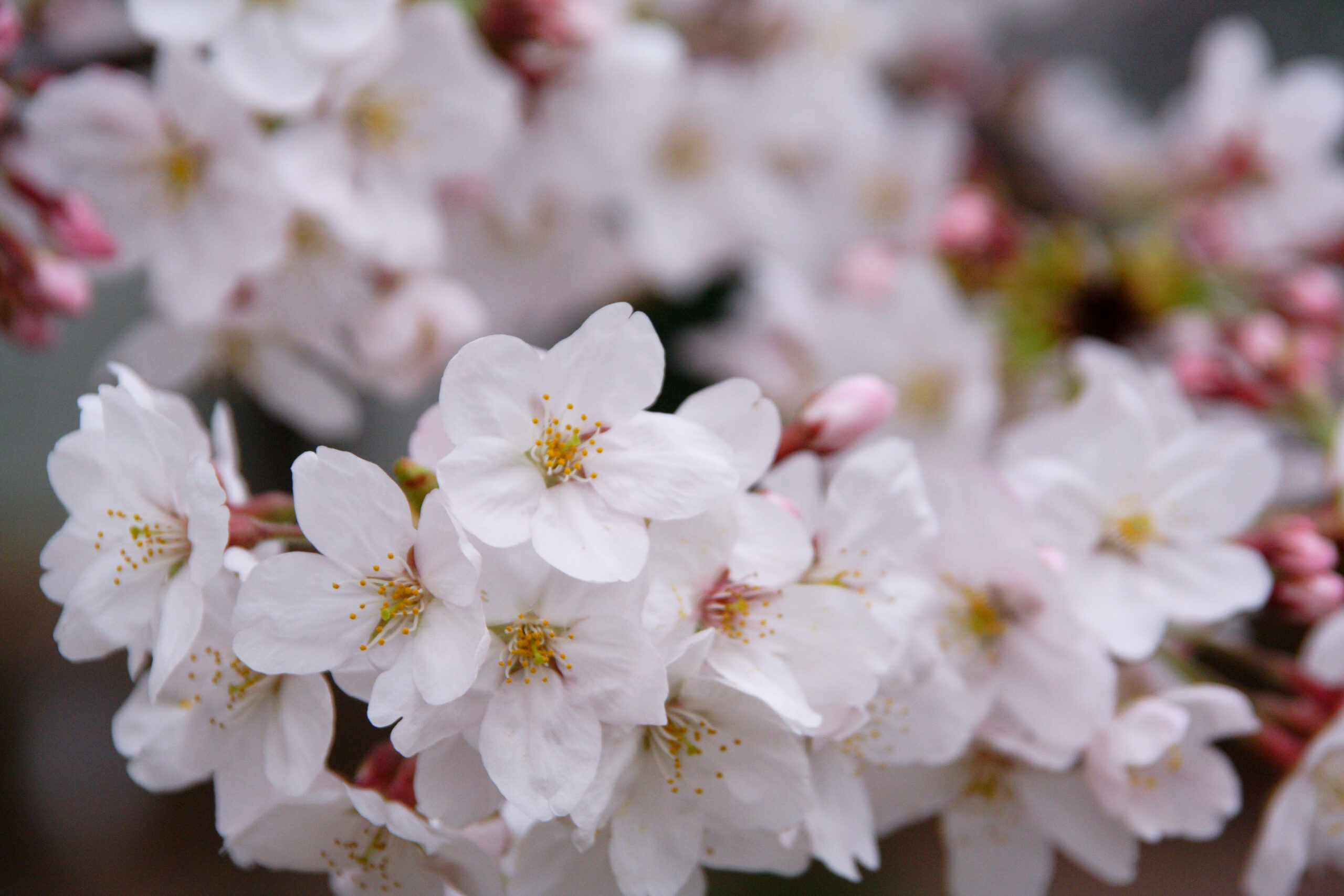
The most popular cherry tree. When in bloom, the flowers cover the branches. In Tokyo, the best time to see them is from late March to early April.
There are many famous cherry blossom viewing spots throughout Japan.
Yama zakura (wild cherry)
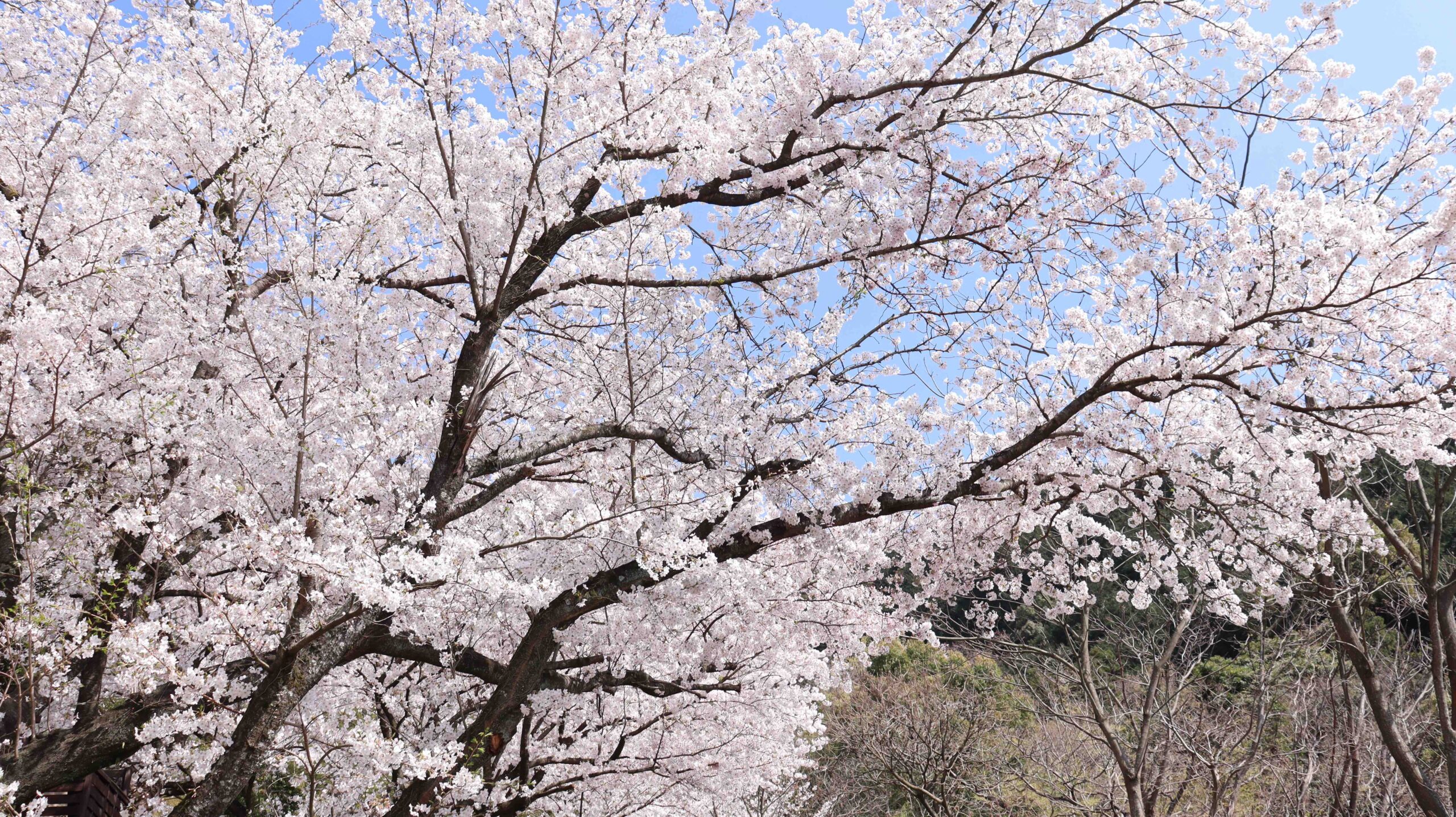
An ancient Japanese wild species, white to pink in color. It is distributed throughout the country. In Tokyo, the best time to see them is from early to mid-April.
Yoshinoyama in Nara Prefecture and Isobe Sakuragawa Park in Ibaraki Prefecture are famous.
Yae zakura (double blossom) 八重桜
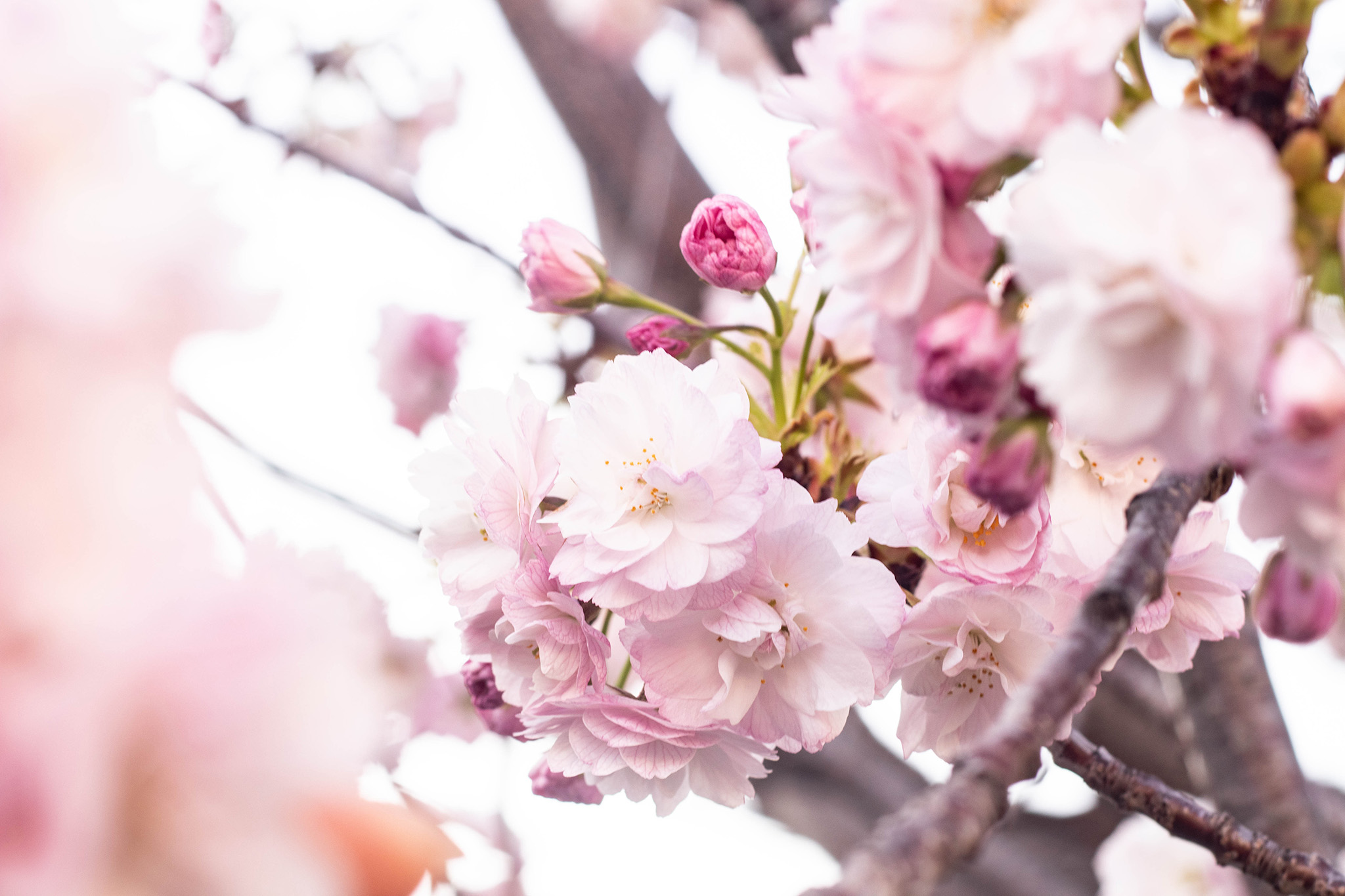
Dark pink with a large number of petals and large in volume. The best time to see them in Tokyo is from mid to late April.
Ueno Park and Shinjuku Gyoen are famous.
Shidare zakura (weeping cherry) 枝垂桜
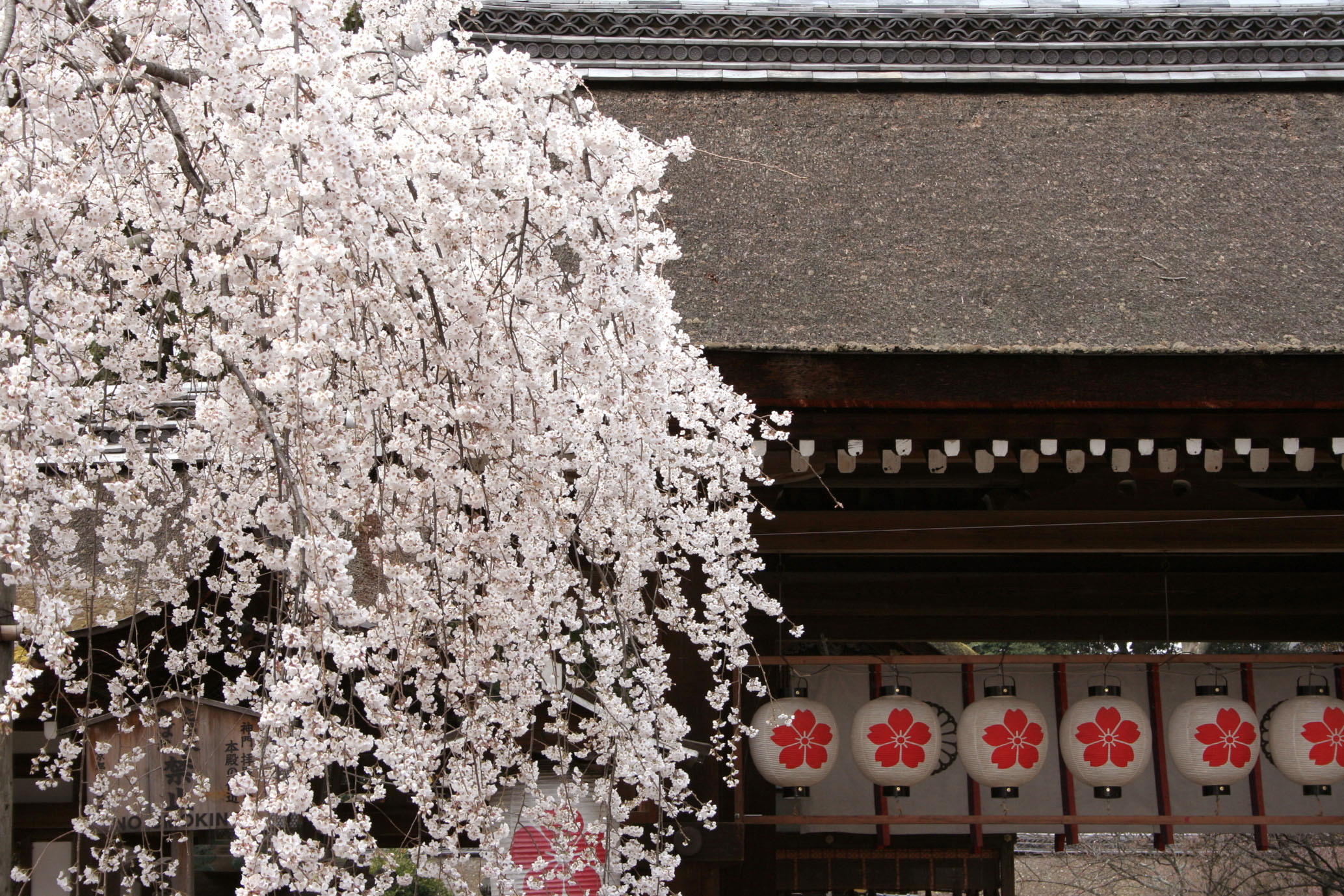
Pale red flowers with drooping branches. The best time to see them in Tokyo is around mid-March.
Maruyama Park in Kyoto Prefecture and Miharu Takizakura in Fukushima Prefecture are famous.
Kawazu zakura 河津桜
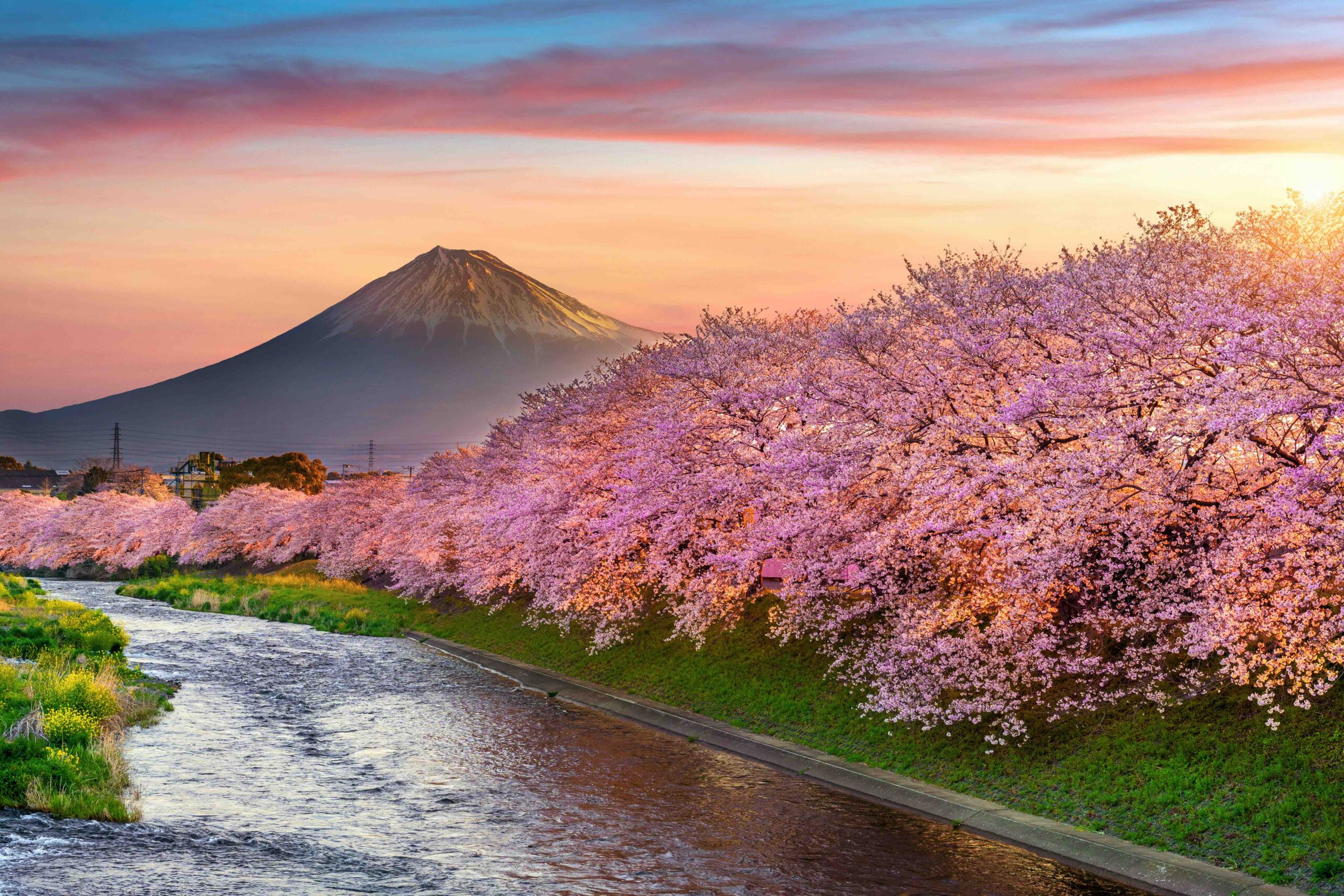
Early blooming, dark pink flowers. Best viewing time is from mid-February to early March in Izu.
There are also Oshima zakura, Edohigan zakura, Kanhi zakura, Kan zakura, and Fuyu zakura.
For more information
“How many types of cherry trees are there? Origin of the name and blooming season.” (in japanese)

Tokyo Hanami Spots
“Hanami” is a springtime event in which people appreciate cherry blossoms and enjoy eating and drinking near them. It is an ancient Japanese custom and is meant to celebrate the arrival of spring.
Chidorigafuchi 千鳥が淵
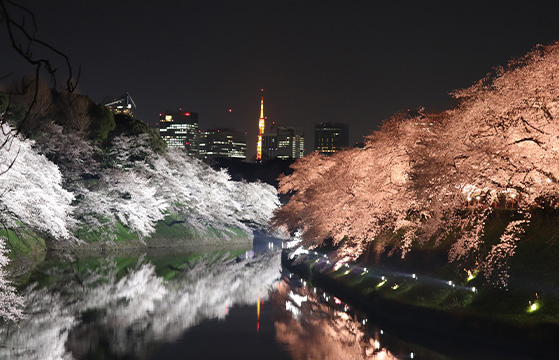
The sight of Someiyoshino trees blooming over the moat of the Imperial Palace is breathtaking. The illumination is also beautiful.
Shinjuku Gyoen 新宿御苑
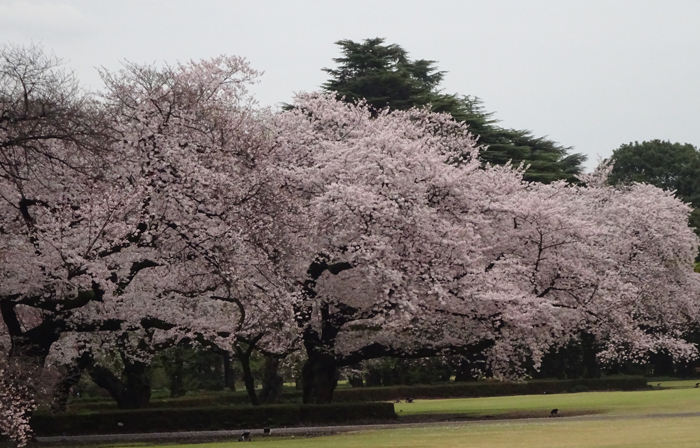
From Someiyoshino to Yaezakura, you can have a hanami picnic sitting on the field. It is worth the admission fee.
Meguro River 目黒川
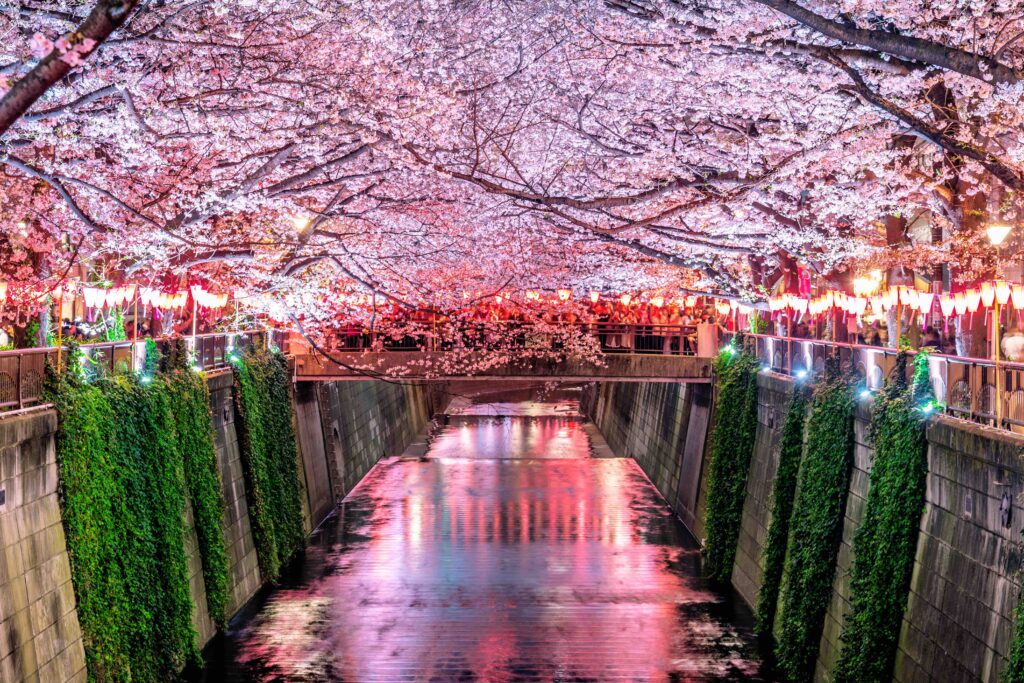
Cherry blossoms bloom on both sides of the Meguro River around Nakameguro station and the area is crowded with restaurants.
Ueno Park 上野公園

The best HANAMI spot where alcohol is allowed. The whole mountain of Ueno is a big feast with the engine running full blast.
For more information
“10 Hanami spots in Tokyo’s 23 wards”
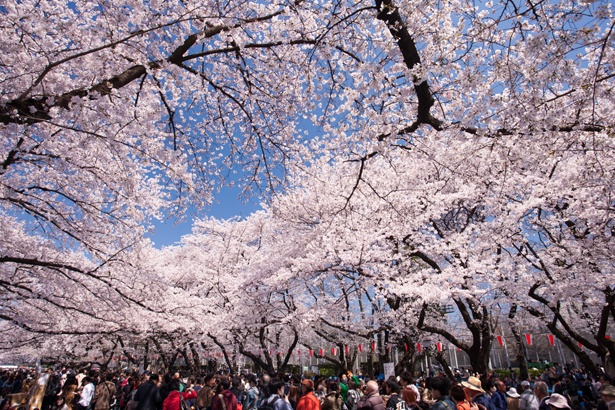
“100 best cherry blossom viewing spots in Japan” (by Japan Sakura Foundation)
Related Playlists
春のうた J-pop spring
Related Articles
New Life Support Songs: Songs suitable for starting a new life, songs for taking a new step forward recommended by the instructor|Kunita Morishita
B’z too! NHK Morning Drama: 10 Popular Theme Songs of Recent Years
High School Baseball: List of popular cheering songs that get people excited at Koshien.
Music Video with Cats
Muse Mode Academy of Music, Vocal Major
Specialized training college, culture and liberal arts, 2-year course, daytime, credit system
Singer, vocalist, voice trainer, vocalist, singing coach





